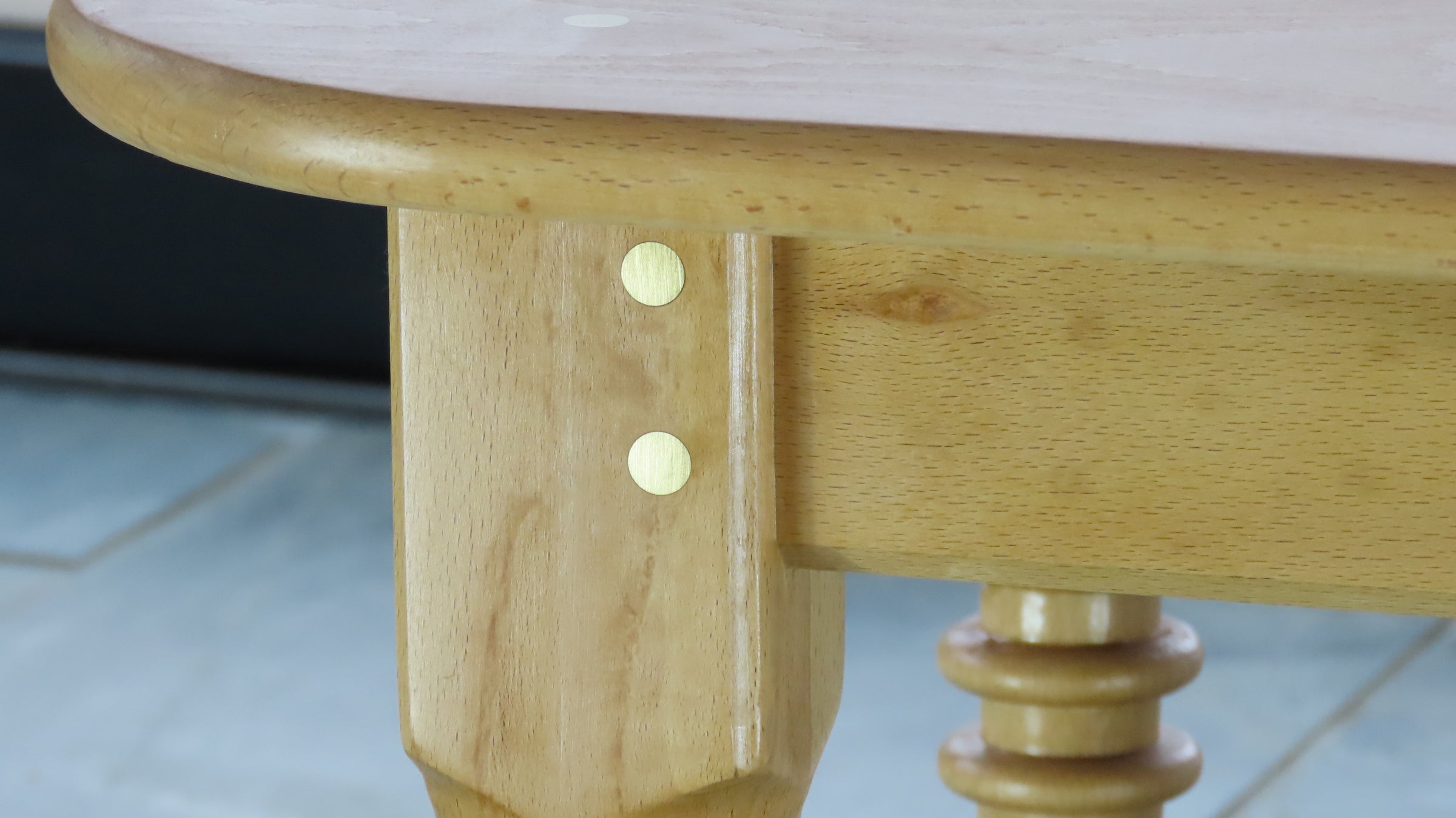
built to last?
furniture fixings
When it comes to furniture, it’s what’s underneath that really matters.
Most people don’t think about joinery, fixings or how something is assembled, but those hidden details can make or break a piece (literally).
From flat-pack bolts to traditional dovetails, the way your furniture is constructed tells you a lot about its quality, strength, and how long it’s likely to last.
Wood: Furniture joinery?
Joinery classics
Traditional joinery methods like mortise and tenon, dovetail, and tongue and groove have been used for centuries and for good reason. These techniques rely on precision-cut wood that locks together without needing screws or brackets. They’re strong, time-tested, and built to last.
Modern options like biscuit joints and Domino joiners use machines to speed things up but still create solid, reliable wooden connections. They’re often found in high-quality workshop builds where efficiency meets integrity.
With traditional joinery, the furniture becomes a single, solid whole - beautiful, but not easily undone.


Built to Move
These days you’ll find mechanical fixings like corner brackets, figure-of-eight connectors and other tabletop fasteners, as well as special threaded inserts and bolts to secure parts.
A modern and more straightforward take on traditional techniques, they're designed to let solid wood move naturally, attach to different materials and make disassembly possible.
They strike a balance between strength, flexibility, and practicality designed with real-life use (and the occasional move) in mind.
Flat-Pack Fixings
Then you've got the flat-pack favourites. Think cam locks, barrel nuts, and those little mystery bolts you swear were missing until they turn up in your sock drawer. These are the go-to for companies like IKEA and most mass-produced ranges.
Designed for quick assembly (and disassembly), they’re ideal if you move often or enjoy the challenge of a Saturday afternoon with an Allen key. But they’re not built for decades of use, can loosen, wear out, and once they’ve gone wobbly, there’s not always much you can do.


ASSEMBLY & REPAIR
How furniture goes together affects how easy it is to fix or adjust later. Furniture crafted with traditional joinery is built for a long time These joints aren’t just strong; they’re designed to be taken apart, repaired, or refinished again and again. Choosing pieces made this way means investing in furniture that grows with your home and your life.
Mechanical fixings allow some flexibility without compromising strength while Flat pack fixings, can loosen after repeated assembly and disassembly, making repairs tricky or impossible, so they end up on the rubbish heap.
NAiled it!
In quality furniture, nails are used sparingly for attaching veneers, backing boards, or decorative trims, not for holding major joints.
But well-chosen screws provide durable, reliable fastening that can be tightened or replaced over time. Spotting carefully selected screws is a sign your piece was built with longevity in mind, even if you don’t see traditional joinery everywhere.


Run for the hills
If your furniture relies heavily on plastic clips, tiny screws, or glue with no real joinery backup, it’s probably a ticking time bomb. These shortcuts might keep things standing for a while, but they will end up wobbly, or fall apart.
And forget about fixing them, once these joints fail, it’s often cheaper to toss and replace than repair. Trust your gut: if it feels flimsy or overly complicated to put together, it’s time to look elsewhere.
Sustainable Fixings
Quality fixings, whether solid wood joints or top-notch metal hardware are the backbone of furniture built to last and wont need to go to landfill as they can be reused.
Flimsy fixings? Not only will they fail fast, dragging the whole thing down, but they’ll then hang around for centuries more at the bottom of the tip, long after the timber is gone!


CHoose like a pro
TO BUY OR NOT TO BUY
Knowing what really holds your furniture together isn’t just trivia, it’s how you avoid wasting money on lookalikes that wobble and fall apart.
Whether it’s old-school joinery, smart mechanical fixings, or quick flat-pack tricks, understanding the build means you can dig deeper and pick pieces that are made to last, as well as impress.






























